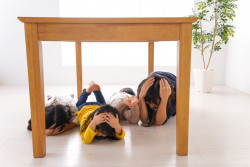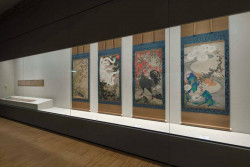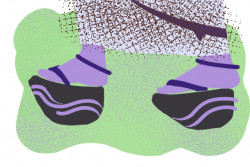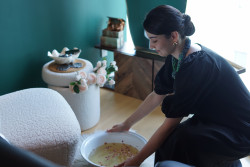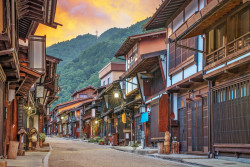
Originally published on metropolis.co.jp on May 2014

That mutual appreciation society of Japanese traditional arts and French impressionism is back in town with the latest exhibition at the Panasonic Shiodome Museum: “French Ceramics at the Time of Impressionism 1866-1886.”
The exhibition, which has already visited three other museums dotted around Japan, harps on a theme dear to the hearts of the Japanese art public, namely the way that Japanese art and design—known by the French as Japonisme—helped inspire the revolutionary aesthetic flowering of impressionism, the one style of modern art that most people actually like.
Ceramics and gentle, colour-sensitive daubs on canvas may not be two things you would normally associate, but in 19th-century France, where everything had to be decorated, most serious artists also tended to do design and decorative work for various manufacturers.
This was certainly the case with Félix Bracquemond, a master of etching who participated in the first impressionist exhibition in 1874. Bracquemond was also employed by Haviland & Co., a manufacturer of luxurious Limoges porcelain, to create designs for their tableware.
Conveniently for the narrative of this exhibition, he was particularly inspired by the flowers and birds he saw in Japanese woodblock prints. Using images taken from Katsushika Hokusai’s Hokusai Manga, he created potent, asymmetrical designs for his Service Rousseau tableware.
At the exhibition, some of these are arranged in table dressings, with flowers, napkins and cutlery, to give the TV-dinner generation a refreshing blast of dining elegance.
One thing I always notice when I visit this museum is the trouble taken to make the layout and displays as attractive as possible, so expect something a lot more attractive than a few jugs and bowls in glass cases.

The Haviland company could maybe be seen as the “image piracy” company of its day, as another one of its ceramic artists was fond of lifting images from Hokusai’s work. But despite sharing a common source, Jules Vieillard’s designs strike quite a different note from those of Bracquemond.
If the exhibition was limited to these works, a more appropriate title would have been “Japonisme and French Ceramics,” but also included are works like Bracquemond’s Engraved Charger with Blue Mountain and Autumn Landscape Design (1874). This was an attempt at applying some of the lessons of impressionist painting—such as the use of vivid colors and natural-looking scenery—directly to ceramic design.
In my opinion the attempt, although impressive, is not entirely successful, and it is not until we get to the rougher, slip-decorated works of Edouard Dammouse, Jules Herbert and Léon Parizot that we get ceramics that look truly impressionist.
Slip—the application of a semi-transparent coating—allows the same diffusion of light and color that impressionist painters achieved. Particularly impressive is Dammouse’s Vase with a Rose Design (1876-83), while Parizot’s Pitcher with Swallow and Flower Design (1876-83) has a gentle lyrical quality with even a hint of wabi-sabi.
The exhibition is rounded out with some stoneware and some elegant copper-red porcelain vase designs by Ernest Chaplet that show the French were also interested in Chinese inspirations from the East. The two-dimensional variety of impressionism is also represented here, with a small selection of paintings by most of the best-known impressionists.
Panasonic Shiodome Museum until June 22. See exhibition listings (other areas) for details.
